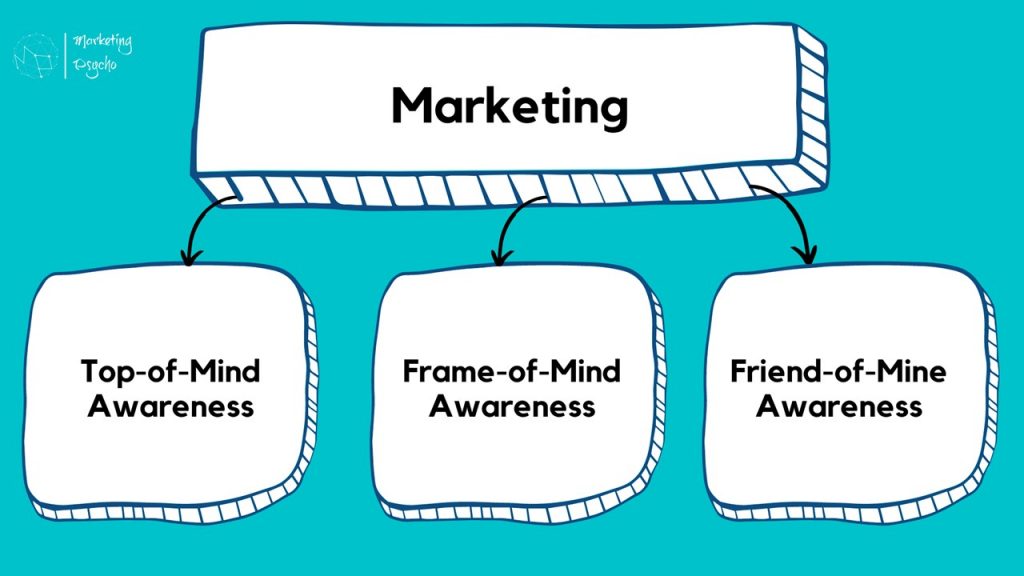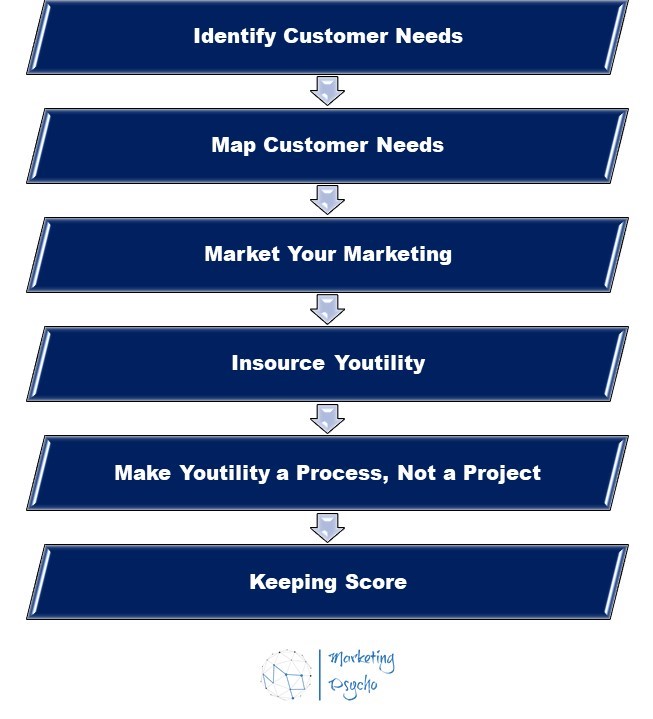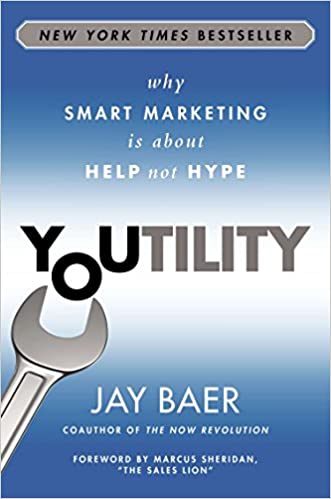In the modern world, traditional approaches to marketing are becoming less effective, so there is a need for new methods, a new look at reality. In this connection, Jay Baer introduces the concept of Youtility, which means providing useful and free information to create trust between the company and its potential and existing customers. It is not necessary to create hype around your company, this will only bring a temporary effect, and then undermine trust in you, it is necessary to build long-term relationships with your audience.
Jay Baer in his book Youtility: Why Smart Marketing Is about Help Not Hype identifies three categories of marketing as it develops.

Three Categories of Marketing
The first and earliest category is Top-of-Mind Awareness (TOMA). TOMA shows what place your brand or product occupies in the minds of customers. A brand or product is considered successful if it takes the first place. Achieving and maintaining such awareness is an expensive path that usually works for already popular brands. Advertising is the most common tool for implementing this strategy. But currently, consumers are overloaded with the amount of advertising that falls on them every day, so they try to ignore it. At the same time, this method does not contribute to the development of trust between customers and the company.
The second category is Frame-of-Mind Awareness. Frame-of-Mind Awareness is a strategy for reaching potential consumers when they are in active shopping mode. Your brand or product appears exactly at the moment when it is necessary for the buyer. This strategy is implemented through Inbound Marketing. This type of marketing was described in the book “Inbound marketing. Get found using Google, Social Media, and Blogs” written by Brian Halligan and Dharmesh Shah. Frame-of-Mind Awareness works at the present time, but this is not enough for modern people. Therefore, the following category appears: Friend-of-Mine Awareness.
Friend-of-Mine Awareness is a strategy based on the understanding that companies are fighting for the attention of real people not with competing companies, but with other real people. For the first time, companies are having to compete in the same territory as our family and friends, using the same tools and technologies, media, and messaging as consumers. Companies are now invading the spaces and mechanisms that we use for personal communication. And if you treat your customers like friends, you will be able to win their trust.
So how can you attract the attention of a potential audience among the amount of information that falls on them every day? There are two ways: to be amazing and to be useful. But the strategy of “being amazing” can only bring you temporary success, whereas using the strategy of “being useful” will bring you long-term relationships, which you should strive for if you want to become friends for your clients. Any company of any size can achieve Friend-of-Mine Awareness if they decide to do it.
Youtility uses the Friend-of-Mine Awareness strategy. There are three facets of Youtility.
Facets of Youtility
The first is self-serve information. Jay Baer says that the Zero Moment of Truth (ZMOT) has become relevant for your business now. This phenomenon is described in the book Winning the Zero Moment of Truth written by Jim Lecinski, Google’s vice president of U.S. Sales and Service. ZMOT refers to the stage of research and analysis of the purchase even before the potential buyer decides to make the final step. He first learns all the information about the product using the gadget and then makes a decision. It is the use of a gadget that is a priority, we turn, first of all, to technology for advice, and not to a real person, so the role of sellers is gradually decreasing and the role of self-service is increasing.
Now it is very important for the company to win this moment since it is at this time that a decisive battle often takes place in the minds of consumers. Provide useful information about you and your product so that the customer can see it at the right time. In some cases, you don’t need to provide all the information that potential customers will have access to at the zero moment of truth—you just need to provide a mechanism for this access. Sometimes it’s just as good to promote the desire for self-service as it is to satisfy them. Marketers should also pay more attention to the preliminary analysis of customer needs and the identification of internal barriers to purchases.
The second is radical transparency. Radical transparency is also an approach for winning the ZMOT. These are the answers to all the questions of your customers, even those that they have not yet had time to ask you. More and more companies are using blogs as a way to communicate with customers and potential customers. The more questions you answer, the more useful you become, which contributes to an increase in loyalty. Since answering questions and blogging requires a lot of effort, you can attract your existing fans and advocates so that they can speak for you.
The third is real-time relevancy. Be useful when the consumer needs it, and then wait until the next moment. Youtility today may not be Youtility tomorrow. Your information may be useful and relevant at certain times and in certain circumstances, but the same information may not work under other circumstances. In this situation, the influence of mobile applications is growing, it is becoming more popular than blogs and people’s recommendations. There are three ways to provide real-time, circumstantial Youtility. The first is to be useful based on the customer’s location. The second is to be useful based on the customer’s situation. The last is to be useful based on seasonality or external factors.
Jay Baer suggests in his book six blueprints to create Youtility.

Six Blueprints to Create Youtility
- Identify Customer Needs
For the information you provide to be truly useful for people, you need to know what they want. You need to understand what your potential customers need to make decisions and how you can improve their lives by providing your content. You need to align what you give to your customers and potential customers with what they really need. There are the following ways to collect data: Search Engine Data, Social Chatter, Web Analytics, and Internal Search, Ask Your Customers What They Want.
- Map Customer Needs to Useful Marketing
It is not enough just to identify the needs, it is also necessary to translate them into real actions. You need to understand not only what your customers need, but also how and where they prefer to access information. For these purposes, it is best to create a different format for providing content so that people can choose the most suitable option for them. At the same time, you should be open to the audience and, of course, the information should be free.
- Market Your Marketing
You have decided to use Youtility in your company, you have launched an application or started a blog, you answer questions. But you must remember that this is the beginning of the path. Everything is still ahead. The goal is not to make information. The goal is to provide information that customers and potential customers will use. For them to know that such information exists, it must be promoted. You should highlight your marketing to the market. To do this, create a promotion plan, you can also use hyper-targeting to boost circumstantial relevance or Social Media. Do not forget about the internal resource – your employees. Today, every employee is in marketing. Having an active and informed team gives your business much more opportunities to attract and raise awareness of your information.
- Insource Youtility
Most organizations that decide to use useful marketing will appoint a person or department responsible for creating useful content that meets the needs of customers and potential customers. But a more successful tactic would be to attract a wide range of employees to create and distribute information. There are four ways to engage employees: circumstantial participation, voluntary participation, assisted participation, and mandatory participation.
- Make Youtility a Process, Not a Project
Youtility does not have a completion date. If you have accepted the principles of useful marking, then you must follow them constantly. This is not a project that has a beginning, a middle, and an end. This is an ongoing process. According to the author, there are three reasons why you should always continue to engage in Youtility: Customer needs change, technology shifts, and new ideas are conceived.
- Keeping Score
Like all other activities, you need to evaluate Youtility. Jay Baer offers four types of indicators for tracking: consumption metrics, advocacy, and sharing metrics, lead-generating metrics, and sales metrics.
Youtility is aimed at building long-term relationships based on trust by providing useful and free information to your audience. Remember, the modern consumer requires a new approach, Youtility can provide you with this.
You can read more marketing, management and sales Book Reviews in the special section of the website.





